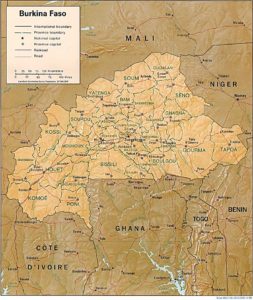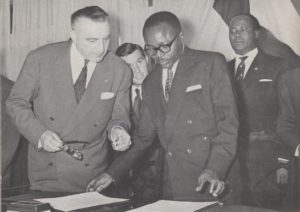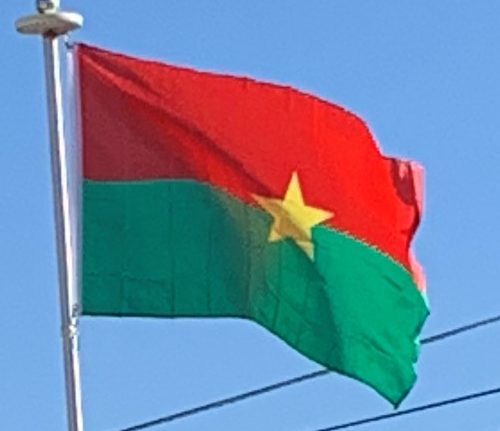The new colony was named Haute Volta, and François Charles Alexis Édouard Hesling became its first governor. Hesling initiated an ambitious road-making program to improve infrastructure and promoted the growth of cotton for export. The cotton policy – based on coercion – failed, and revenue generated by the colony stagnated. The colony was dismantled on 5 September 1932, being split between the French colonies of Ivory Coast, French Sudan and Niger. Ivory Coast received the largest share, which contained most of the population as well as the cities of Ouagadougou and Bobo-Dioulasso.
France reversed this change during the period of intense anti-colonial agitation that followed the end of World War II. On 4 September 1947, it revived the colony of Upper Volta, with its previous boundaries, as a part of the French Union. The French designated its colonies as departments of metropolitan France on the European continent.

On 11 December 1958 the colony achieved self-government as the Republic of Upper Volta; it joined the Franco-African Community. A revision in the organization of French Overseas Territories had begun with the passage of the Basic Law (Loi Cadre) of 23 July 1956. This act was followed by reorganization measures approved by the French parliament early in 1957 to ensure a large degree of self-government for individual territories. Upper Volta became an autonomous republic in the French community on 11 December 1958. Full independence from France was received in 1960.
Upper Volta (1958–1984):
The first president, Maurice Yaméogo, was the leader of the Voltaic Democratic Union (UDV). The 1960 constitution provided for election by universal suffrage of a president and a national assembly for five-year terms. Soon after coming to power, Yaméogo banned all political parties other than the UDV. The government lasted until 1966. After much unrest, including mass demonstrations and strikes by students, labor unions, and civil servants, the military intervened.

The 1966 military coup deposed Yaméogo, suspended the constitution, dissolved the National Assembly, and placed Lt. Col. Sangoulé Lamizana at the head of a government of senior army officers. The army remained in power for four years. Lamizana remained in power throughout the 1970s as president of military or mixed civil-military governments. Lamizana’s rule coincided with the beginning of the Sahel drought and famine which had a devastating impact on Upper Volta and neighboring countries. Lamizana was re-elected by open elections in 1978.
Lamizana’s government faced problems with the country’s traditionally powerful trade unions, and on 25 November 1980, Col. Saye Zerbo overthrew President Lamizana in a bloodless coup. Colonel Zerbo established the Military Committee of Recovery for National Progress as the supreme governmental authority, thus eradicating the 1977 constitution.
Colonel Zerbo also encountered resistance from trade unions and was overthrown two years later by Maj. Dr. Jean-Baptiste Ouédraogo and the Council of Popular Salvation (CSP) in the 1982 Upper Voltan coup d’état. The CSP continued to ban political parties and organizations, yet promised a transition to civilian rule and a new constitution.
